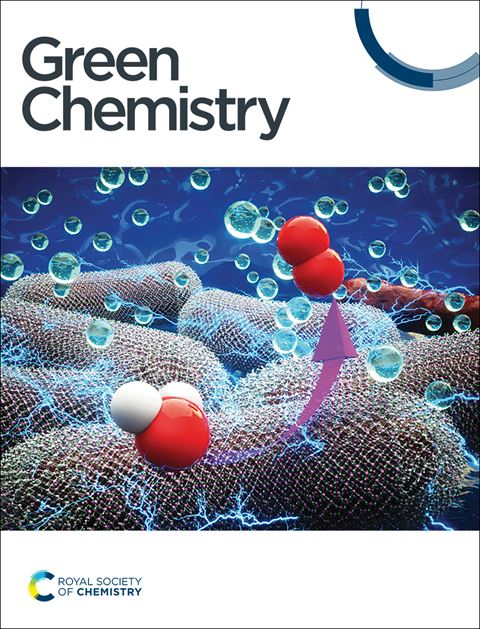A fast and low energy-consumption method for the conversion of lignocellulosic biomass to sustainable structural color materials†
IF 9.3
1区 化学
Q1 CHEMISTRY, MULTIDISCIPLINARY
引用次数: 0
Abstract
Structural color materials are widely applied in advanced optical, biomedical, and energy fields. As the demand for sustainable development and green manufacturing continues to grow in the functional materials sector, the next-generation structural color materials are expected to be prepared with renewable, biocompatible, and biodegradable resources such as lignocellulosic biomass. In this work, we present a fast and low energy-consumption method for converting lignocellulosic biomass to sustainable structural color materials. The lignocellulosic biomass is first treated with an organic–water cosolvent to obtain the extracted solution. Then, the lignin component in the extracted solution, without any purification and fractionation treatment, is assembled into uniform clusters by increasing the water content in the cosolvent to 80 vol%. Finally, the structural color materials are prepared by constructing a periodically ordered array of lignin clusters after centrifugation. The acetone–water cosolvent (6 : 4, v/v) was found to exhibit the best performance for the preparation of structural color materials among 12 different cosolvents, as the extracted lignin in this cosolvent system shows good uniformity and appropriate surface charge. Moreover, the structural color materials obtained from lignocellulosic biomass exhibit tunable colors and good water-responsive properties, and show promising potential as green paints and cosmetics. This strategy greatly simplifies the production process of structural color materials from lignocellulosic biomass, and thus significantly reduces the consumption of energy, time, and solvent compared with the existing methods.

求助全文
约1分钟内获得全文
求助全文
来源期刊

Green Chemistry
化学-化学综合
CiteScore
16.10
自引率
7.10%
发文量
677
审稿时长
1.4 months
期刊介绍:
Green Chemistry is a journal that provides a unique forum for the publication of innovative research on the development of alternative green and sustainable technologies. The scope of Green Chemistry is based on the definition proposed by Anastas and Warner (Green Chemistry: Theory and Practice, P T Anastas and J C Warner, Oxford University Press, Oxford, 1998), which defines green chemistry as the utilisation of a set of principles that reduces or eliminates the use or generation of hazardous substances in the design, manufacture and application of chemical products. Green Chemistry aims to reduce the environmental impact of the chemical enterprise by developing a technology base that is inherently non-toxic to living things and the environment. The journal welcomes submissions on all aspects of research relating to this endeavor and publishes original and significant cutting-edge research that is likely to be of wide general appeal. For a work to be published, it must present a significant advance in green chemistry, including a comparison with existing methods and a demonstration of advantages over those methods.
 求助内容:
求助内容: 应助结果提醒方式:
应助结果提醒方式:


